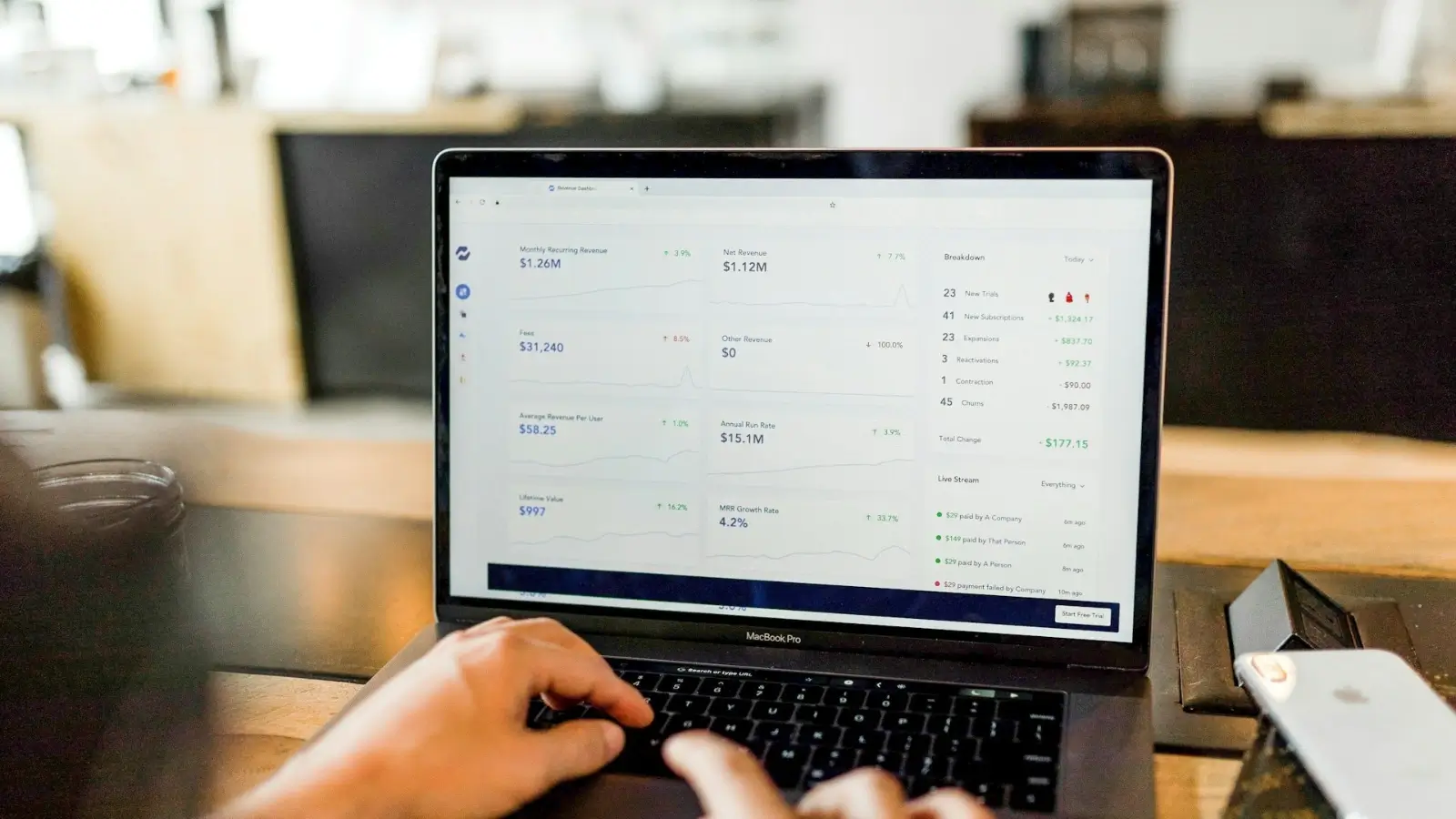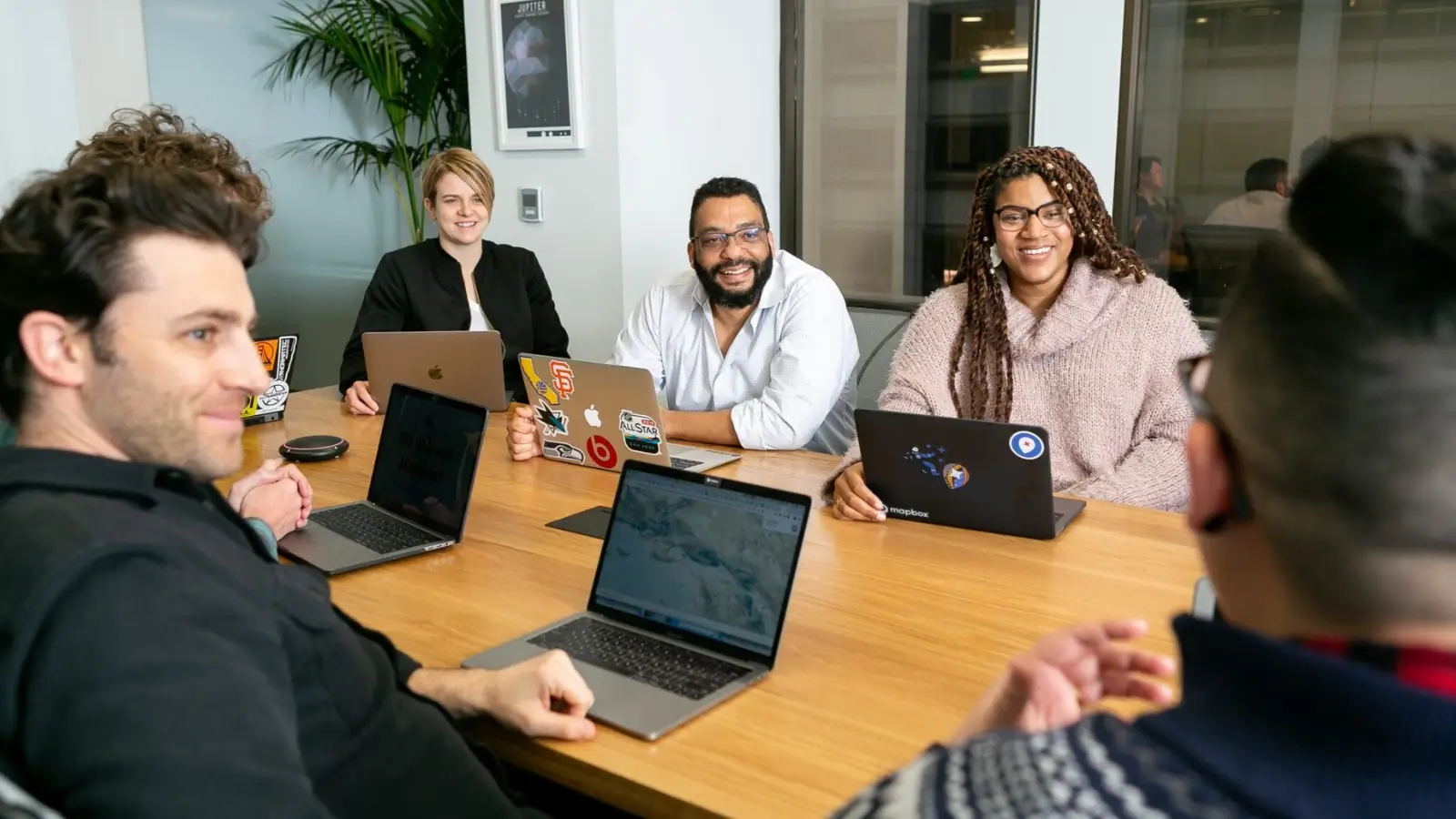


In today's competitive landscape, a strong online presence is non-negotiable. Your website is often the first interaction customers have with your brand. It's not just a digital brochure; it's a critical tool for driving business growth.
For companies looking to scale, investing in professional web design is a strategic move. Large web design companies bring significant resources and specialized expertise to the table. They can tackle complex projects and deliver comprehensive solutions.
This article explores big web design companies. We will define what makes a firm 'big' and detail the key services they offer. We will also examine how their processes differ from smaller agencies. Our aim is to help you understand the advantages and disadvantages of working with these firms. We'll also look at how these companies measure success and ensure their projects deliver real business value. We want to show you how they provide web design for measurable growth.
When we talk about "big web design companies," we're not just referring to their physical office size or the number of employees. While these factors certainly play a role, a truly "big" web design company, especially one focused on driving growth, is defined by its comprehensive capabilities, strategic approach, and ability to handle projects of significant scale and complexity.
These firms often operate as strategic partners rather than mere service providers. They dig deep into a client's business objectives, target audience, and market landscape to craft digital solutions that are not only aesthetically pleasing but also highly functional and conversion-optimized. Their operations are typically characterized by data-driven decisions, ensuring that every design and development choice is backed by research and aimed at achieving specific business outcomes.
From a statistical perspective, while the web design market in Canada, for instance, is dominated by small agencies (85.6% having under 49 employees), "big" companies represent a smaller, but highly impactful, segment. We see mid-sized firms (50-249 employees) making up 11.9%, and large firms (250+ employees) accounting for 1.8%. The truly enterprise-level players (1,000+ employees) comprise a mere 0.7%. This indicates that "big" is a relative term, but generally implies a significant operational footprint and extensive resources.
These larger entities are typically equipped to handle projects with substantial scope and investment. While many agencies accept projects with budgets under $1,000, a large web design company often requires a minimum budget of $50,000 or more for custom digital experiences, advanced UI/UX solutions, and complex web technologies. This reflects their capacity to deliver intricate, high-value projects for enterprise clients or those with ambitious growth targets. Their global presence, or at least a national reach, allows them to serve a diverse portfolio of clients, from major corporations to rapidly scaling businesses across various industries.
Big web design companies distinguish themselves through their extensive and integrated service offerings. They typically provide a full suite of solutions, ensuring every aspect of a digital presence is optimized for performance and growth. This holistic approach means clients don't need to juggle multiple vendors for different aspects of their online strategy.
At the heart of any successful growth-focused website is exceptional User Interface (UI) and User Experience (UX) design. Large agencies invest heavily in dedicated UI/UX teams that specialize in creating intuitive, engaging, and conversion-optimized digital experiences. Their process usually begins with in-depth user research, including audience analysis, persona development, and journey mapping, to truly understand user needs and behaviors.
This research informs every design decision, focusing on Conversion Rate Optimization (CRO) to turn visitors into leads or customers. Techniques like A/B testing, heatmaps, and session recordings are standard practice to continuously refine the user journey. Furthermore, these companies prioritize accessibility (WCAG compliance) to ensure websites are usable by everyone, expanding reach and improving overall user experience.
Beyond design, large web design companies excel in robust web development. They possess the technical prowess to build complex, scalable, and secure platforms. This includes expertise in:
A beautiful, functional website is only effective if people can find it. Big web design companies inherently understand this, integrating digital marketing and SEO strategies from the very beginning of a project.
Choosing a web design partner is a critical decision, and the size of the agency can significantly impact the project experience and outcome. Large web design companies, with their extensive resources and structured operations, offer a distinct set of advantages and disadvantages compared to smaller, boutique firms.
Large agencies typically operate with highly structured workflows and methodologies. This means:
While this structure brings efficiency and depth, smaller agencies might offer a more agile, hands-on approach with direct access to the creative leads.
Understanding the trade-offs is essential for making an informed decision:
Feature Large Web Design Companies Small Web Design Agencies Expertise Deep specialization across multiple disciplines; industry-specific knowledge. Broader skill sets within a smaller team; niche specialization. Services Comprehensive, integrated solutions (design, development, SEO, marketing, etc.). Often focused on core services; may outsource specialized tasks. Process Highly structured, methodical, and process-driven. Agile, flexible, and often less formal. Communication Formal reports, dedicated project managers, scheduled meetings. Direct access to key personnel, informal, responsive. Cost Generally higher project minimums and hourly rates. More budget-friendly options, flexible pricing. Speed Can manage complex timelines, but overall project duration might be longer due to process. Often quicker turnaround for simpler projects. Personalization Custom solutions based on extensive research, but less personal client interaction. Highly personalized service, close client relationships. Scalability Equipped to handle large-scale, complex projects and future growth. Better suited for smaller, more focused projects. Working with a large web design company means benefiting from deep expertise, comprehensive services, and a proven track record with diverse clients. They have the infrastructure to manage complex projects and deliver high-quality results consistently. However, this often comes with higher costs and potentially longer timelines due to their structured processes. While smaller agencies might offer more personalized interaction and flexibility, they may lack the specialized depth or capacity for very large-scale projects.
The digital landscape is constantly evolving, and leading web design companies are at the forefront of adopting new technologies and trends to future-proof their clients' online presence and maintain a competitive edge. Staying ahead means constantly innovating and integrating cutting-edge solutions.
Artificial intelligence (AI) is rapidly changing various industries, and web design is no exception. Big web design companies are leveraging AI to create more dynamic, personalized, and efficient user experiences:
As technology advances, so does the demand for more engaging and immersive online experiences. Large web design firms are exploring and implementing Augmented Reality (AR), Virtual Reality (VR), and 3D elements:
To achieve maximum flexibility, scalability, and omnichannel capabilities, top web design companies are increasingly adopting composable architecture and headless CMS solutions:
For businesses investing significantly in a new website, demonstrating a clear Return on Investment (ROI) is paramount. Big web design companies understand this imperative and employ sophisticated methods to measure success, providing clients with tangible proof of their website's performance.
The first step in measuring success is to define Key Performance Indicators (KPIs) that directly align with business objectives. These are not just vanity metrics but actionable data points that reflect growth:
Measurement is not a one-time event but an ongoing process. Large web design companies use advanced analytics and tools for continuous optimization:
The goal is to partner with an agency that doesn't just build a website but is invested in its long-term success. This means looking for firms that offer:
This commitment to ongoing partnership is what truly enables web design for measurable growth.
Engaging a big web design company is a significant investment, and potential clients often have questions about the process, costs, and preparation involved. Here are some common inquiries:
The cost of a website from a large design company can vary widely based on complexity, features, and the agency's expertise. Generally, these firms operate with higher project minimums due to the depth of their services and the size of their dedicated teams.
The timeline for building a high-performance website with a large agency is typically longer than with smaller firms, given the strategic depth and rigorous processes involved.
To maximize the effectiveness of your initial consultations and ensure the agency understands your needs, having certain information prepared is highly beneficial:
Providing this information upfront allows the agency to quickly grasp your vision and propose solutions that are truly aligned with your growth objectives.
Engaging with a big web design company is more than just commissioning a website; it's entering into a strategic partnership aimed at driving significant business growth. These powerhouses offer unparalleled expertise, comprehensive services, and a structured approach to tackle complex digital challenges. They leverage cutting-edge trends like AI-powered personalization, immersive AR/VR experiences, and flexible composable architectures to build future-proof platforms.
While the investment may be substantial, the potential for measurable ROI through optimized conversion rates, improved lead quality, and improved customer lifetime value makes it a worthwhile endeavor. By establishing clear KPIs, continuously leveraging data for optimization, and choosing partners committed to long-term success, businesses can ensure their website becomes a powerful engine for expansion.
The future of web design is dynamic and exciting, and big web design companies are uniquely positioned to steer these changes, helping businesses not just survive, but thrive in the digital age.